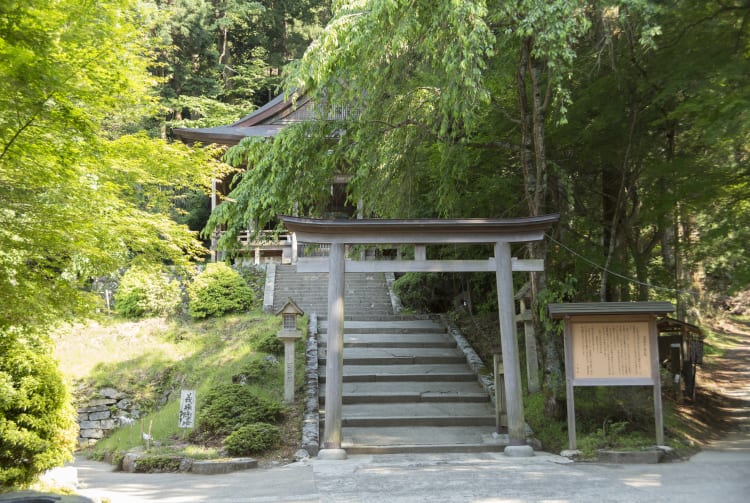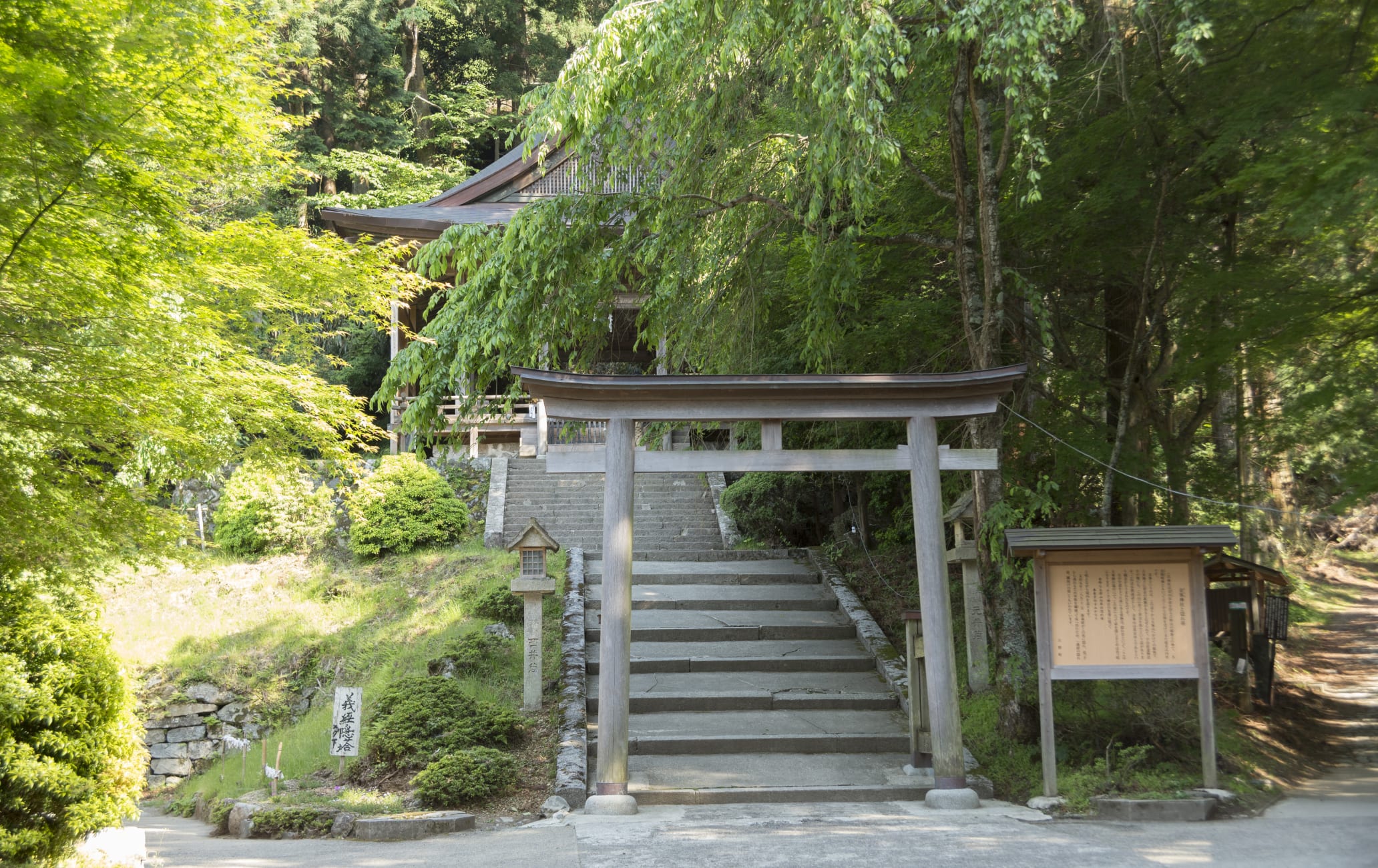A shrine dedicated to the god of gold, and a gateway for holy pilgrimages
Kinpu-jinja Shrine is dedicated to the god of Mt. Yoshino , Kanayamahiko-no-mikoto, a patron saint of gold mines and miners.
How to Get There
A 30-minute drive from Yoshino Ropeway's upper station, Yoshinoyama Station.
Spring blossoms and ancient cedars
Enjoy peaceful surroundings on the way to Kinpu-jinja shrine. Ancient Japanese cedars tower over you in the forest, and flowering trees and bushes give splashes of color at various seasons. Visitors flock to see the cherry blossoms in March or April.
The gateway to ascetic pilgrimages
Kinpu-jinja Shrine has been used for ascetic training since before the Edo period (1603-1867) and is still used for this practice today. The sect associated with this shrine is Shugendo mountain asceticism. People receive training and pray here before embarking on long pilgrimages. The area is registered as a UNESCO World Heritage site as part of these pilgrimage routes.
The cleansing ceremony
You can join one of these ascetic practices for a small fee. Cleansing ceremonies are held inside the Kakureto pagoda. This is one of the very few chances to enter a pagoda of a shrine, so if you are up to the challenge, a cleansing ceremony here makes for a unique experience. The ceremony is in Japanese only, so some Japanese language skills or a guide are required.
The legend of Yoshitsune's escape
This shrine is home to a historical legend. According to legend, the brother of Minamoto Yoshitsune, who was a warrior from the 12th century, was jealous of Yoshitsune's power and popularity and chased him to this shrine.
Yoshitsune hid himself in the pagoda here for a time. After that, the pagoda was named the Kakureto, or hideout, pagoda. Accounts vary as to whether or not he was able to ultimately avoid being captured by his brother's servants. The current pagoda is a latter-day reconstruction, but it is still remembered as the source of this legend.

























































